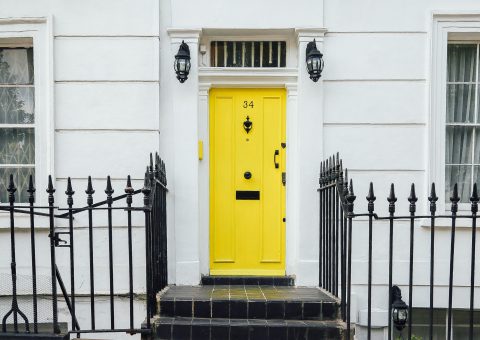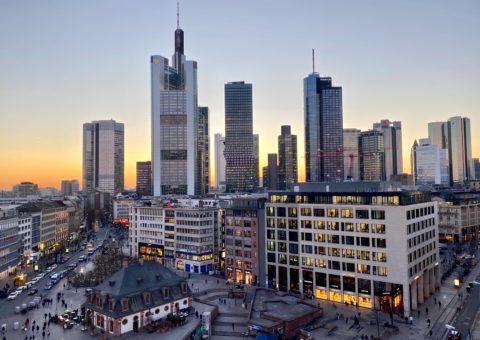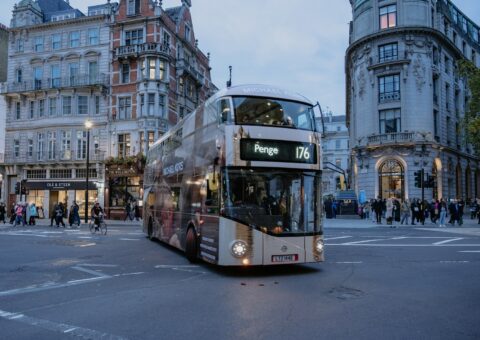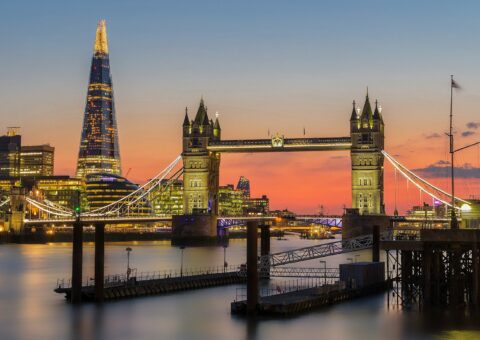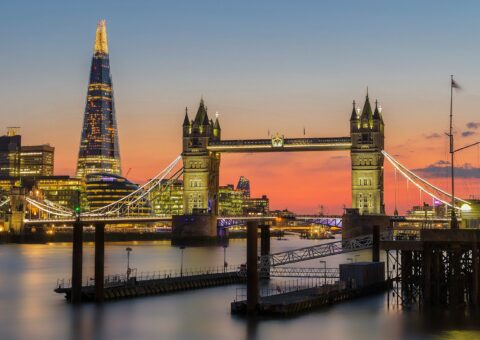Digital Nomads in Madrid: Everything You Need to Know
Thinking of becoming another of the sun-loving digital nomads in Madrid?
Good plan!
Moving to Spain’s capital is becoming an increasingly popular option. The city is a trendy travel hub and a trendy place to live—and it’s currently enjoying an impressive post-Covid boom. And on top of all that, Spain now offers an appealing digital nomad visa with lots of perks and pros for remote workers like you (more detail on that coming up soon!).
In short, more and more people are flocking to Madrid—around 16% of the city’s current residents are non-natives.
So coming up, we’ve brought you everything you need to know about becoming another of the digital nomads in Madrid. We’ve included juicy details on costs, food, drink, interesting neighborhoods, how to spend your time, and plenty more.
We’ve also brought you many remote-working must-knows, including how you can quickly make friends, where and how you can find a short-term rental, how you can live in the city long-term, and all the best cafes and co-working spaces for getting some work done.
Today, your good buddies at Homelike are taking a fact-filled trip to Madrid. Grab a plate of tapas, and get yourself along for the ride!
Why Madrid is a great place for digital nomads
For digital nomads in Madrid, the best parts of living in the city include…
- The digital nomad visa: we’re gonna keep mentioning this again and again… but the advantage-filled digital nomad visa is (of course!) a brilliant reason to live in Madrid.
- Feast-worthy food: Madrid is one of the world’s best appetite-inducing epicenters. You’ll find some of the most flavorful Spanish fayre you’ve ever chewed on—but you’ll also find tasty treats from around the globe.
- Low cost of living: okay, Madrid isn’t as low-cost as the remote-working hotspots in Southeast Asia or northern Africa. But compared to other parts of western Europe, Madrid’s prices are very appealing and affordable. Long-term digital nomads in Madrid can save some hefty wads of cash.
- Fantastic public transport: but we’ll come to all the details on that soon!
- A huge number of cafes and co-working spaces to work from: again, more detail coming up shortly…!
- It’s easy to make friends: for socializing, Madrid is one of the best places to live in Spain. The city is home to lots of young people, expats, friendly faces, and other digital nomads (partially thanks to that visa we keep talking about). The city is hugely diverse, and you’ll fit right in.
- Non-stop nightlife: younger digital nomads in Madrid often come here for the bouncing beats and the bottomless booze. If you like partying and staying out late, you’ll also love living in Madrid.
- It’s plonked right in the center of the nation: you’re a digital nomad, so you like moving around a lot. Madrid’s super-central location is perfect for hopping to different parts of the nation… for day trips, weekends away, and even finding another long-term home.
For so many reasons, Madrid really is one of the best places to live in Europe. So don’t be surprised if you never want to leave.
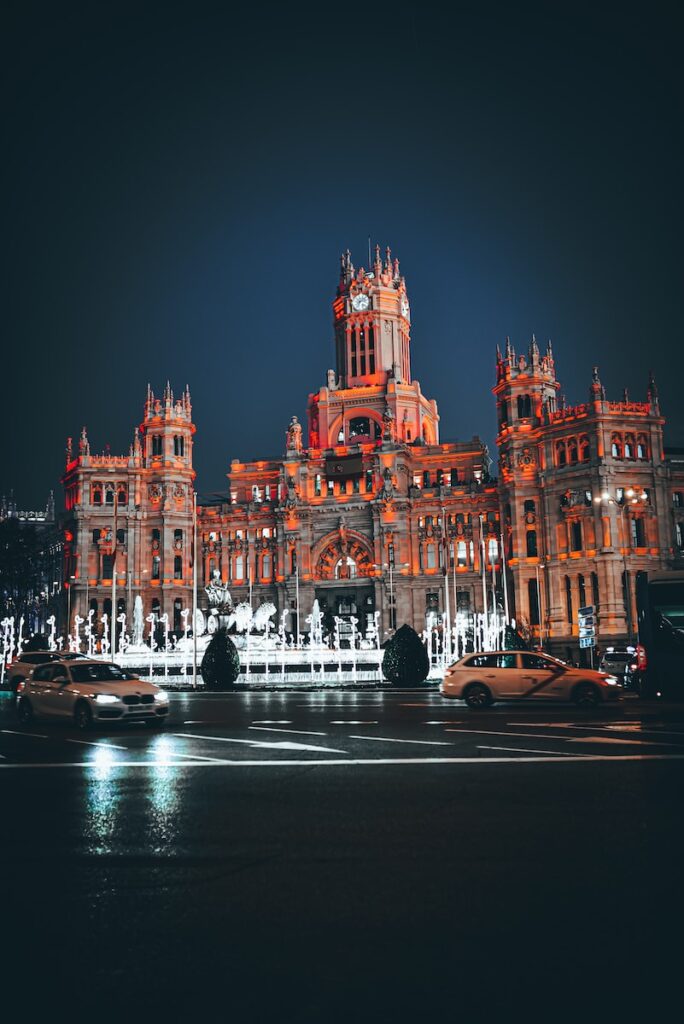
Why Madrid isn’t always a great place for digital nomads
The worst parts of joining the digital nomads in Madrid are…
- It’s very busy and noisy: some digital nomads in Madrid hate this, while others even think it’s a perk. But if you live in the center of the city, expect lots of noise, and little respite. It’s a busy non-stop city, which can get tiresome over time.
- Late living: some digital nomads have specific work schedules—and if you’re the type of person who likes to sleep, eat and work early, you might not like living here. People typically eat dinner between 9pm and midnight, and often wake up late.
- It can be very difficult to find a place to live: Madrid is a popular place to live. And it’s becoming more and more popular, so finding a comfortable work-friendly home can be very tough. Often, it’s best to instead live in a serviced apartment or a serviced flat (especially if you’ll only be around for a short while).
Is a visa required for digital nomads in Madrid?
That depends upon what your plans are, where you’re from, and how long you want to stay.
But let’s get this section started with some exciting news. Spain’s digital nomad visa has recently been released, meaning that many digital nomads can stay in the country for between one and five years. And get this: for the first four years, digital nomads (including you!) can benefit from a tasty tax break… making life cheaper, more appealing, and more profitable.
To be eligible for this visa, you’ll need to provide proof that you’re a digital nomad, and that you have some remote contracts. Overall, it’s pretty easy to fulfill the requirements, and pretty easy to start a brand-new life in Madrid.
That said, if you’re from the EU/EEA area and want to join the digital nomads in Madrid, things are way easier for you—because of the EU’s freedom of movement rules, you can move to the city with very little fuss or stress.
If that’s the case, you aren’t able to apply for the digital nomad visa—but because you can already move to Spain with very little bureaucracy, you won’t need it.
If you’re from the EU/EEA area, and want to stay in Spain for longer than three months, you simply need to officially register your presence in the nation within three months of arriving. You’ll then receive your Foreigner’s Identity Number (NIE)… and you’ll officially be living in Spain!
Best neighborhoods to stay in Madrid
The best neighborhoods for digital nomads in Madrid include…
- Sol (average monthly rental cost, €1,400): the center of the center, Sol is a popular choice for short-term digital nomads in Madrid. You’ll find lots of tourists, lots of famous attractions, and lots of places to eat, drink, and dance. It’s busy, but that’s the point.
- Malasaña (average monthly rental cost, €1,000): the most hip and trendy part of the city, this happening hub is packed with bohemians, brunch spots, and lots of interesting nightlife. Expect vintage stores, unusual events, and many edgy expats.
- Justicia (average monthly rental cost, €1,200): very similar to neighboring Malasaña, Justicia is vaguely cheaper and quieter than its party-centric cousin. It’s a popular choice for LGBTQI digital nomads in Madrid, who often socialize in and around Chueca.
- La Latina (average monthly rental cost, €900): for immersing yourself in the local vibe of the city (without lingering on the outskirts), this is where you want to be. Cobbled and central La Latina somehow feels like someone inflated an old-school Spanish village. It’s filled with picturesque places, great tapas joints, and welcoming locals and foreigners.
- Las Tablas (average monthly rental cost, €900): if you’re another of the family-bringing digital nomads in Madrid, this is the best neighborhood for you. Here, you’ll find quiet areas, excellent green spaces, more friendly families, well-known international schools, and good proximity to the airport.
- Usera (average monthly rental cost, €700): though this neighborhood is south of the center, it’s emerging as an up-and-coming place to live… and it’s rapidly becoming more popular. It’s home to lots of trendy hangouts, a very diverse community, the city’s Chinatown, great budget housing, and a big bunch of hipsters.
We’ve covered all these districts and (and many more!) in our guide to the best neighborhoods to live in Madrid.

How to find a rental in Madrid to spend a few months as a digital nomad
As we already mentioned, it’s often very difficult to find a rental (whether short-term or long-term) in Madrid. Every day, countless people in the city are looking for a new home—so the competition is high, the best places are quickly pounced upon, and landlords are able to charge ridiculously-high fees for ridiculously-bad places.
For that reason, it’s often easier to instead get yourself a serviced apartment or a serviced flat—you don’t need to attend house viewings, you don’t need to deal with landlords, and you don’t need to take time away from work. The options on our site are all affordable, comfortable, and perfect for living and working from. And best of all, they’re all fully furnished—so they’re ready to call home today.
That said, if you want to be all independent, your best resources are Idealista and Fotocasa. Both sites are popular with locals and foreigners, and they offer a wide range of varied housing.
Facebook is another good option—there, you’ll find many houses and apartments throughout various parts of Madrid. Two of the best groups are this one and this one. Most listings are posted in English.
Best areas for restaurants and bars in Madrid
For digital nomads in Madrid, the allure of all the eateries and drinking dens is one of the city’s biggest perks. For enjoying the best of them, here are the neighborhoods you want to visit:
- La Latina: here, you’ll find tourist-friendly local joints (perfect compromise!), with tasty plates and decent prices. Explore Juana La Loca (a sleek tapas place), Marmitón Bistró (somehow both classy and laid-back), and Ruda Café (with its great coffees and cakes).
- Usera: if you want to munch on Asian food, head here. In the small-but-stuffed Chinatown area, you’ll find casual eateries like Jin Yun Shao Bing and Helaotai.
Salamanca: this is a popular hangout for classy and high-earning digital nomads in Madrid. You’ll find cocktail joints, wine bars, and lots more fancy places. Highlights include the fine dining of Coque, and the outrageously-elegant Dry Martini Bar.
Best areas for Madrid nightlife
If you’re joining the packs of party-loving digital nomads in Madrid, here are the best neighborhoods for you…
- Malasaña: most locals and expats know this is exactly the place to party. For a casual dance, head to La Vía Láctea. For old-school drinks in a no-frills bar, head to Madrid me Mata. And for a weird combo of sci-fi and rock, get yourself to Mongo Bar.
- Justicia: for an anything-goes burst of sheer frenetic fun, this is the neighborhood in Madrid. The best bars include Lola 09 and Baranoa Bar, while the two of the best nightclubs are Delirium Dance Club and Kavu Discopub.
- Lavapiés: a little more under-the-radar than some of the other areas we’ve featured, this is a good pick for finding local pockets of lesser-known fun. Some of the best spots include One Love (a reggae bar), Olivia Rock’n’Roll Cafe, and Blackbird Rock Bar.
Top things to do in Madrid
Digital nomads in Madrid will never run short of things to do. The city is packed with action and adventures, including…
- See some history: Madrid is stuffed with a whole load of historical sites. Highlights include religious buildings (like the Royal Basilica of Saint Francis the Great and Catedral de la Almudena), and lots more ancient architecture (check out the Egyptian Temple of Debod and the city’s royal palace).
- Engage with endless art: for creative digital nomads in Madrid, this is one of the city’s most exciting draws. But even if you’re not usually artistic, you’ll still enjoy some of the city’s galleries. Head to Museo del Prado, Reina Sofía, and the Thyssen-Bornemisza.
- Wander around some green spaces: a massive 39% of Madrid is made up of green spaces. The city is perfect for picnics, romantic strolls, lazing in the sun, and spending lounging-around time with family and friends.
- Adventure outdoors: venture just slightly beyond Madrid, and you’ll find loads of exciting outdoor adventures. Popular options include canyoning and kayaking, hiking in Hueco de las Hoces and Sierra de Guadarrama, and lots of nearby bike rides.
- Venture further afield: we’ve already sort of covered this, but digital nomads in Madrid are well-located for adventuring in and around other close-by parts of Spain. For visiting appealing towns and villages, your best options are Toledo, Chinchón, and Salamanca.
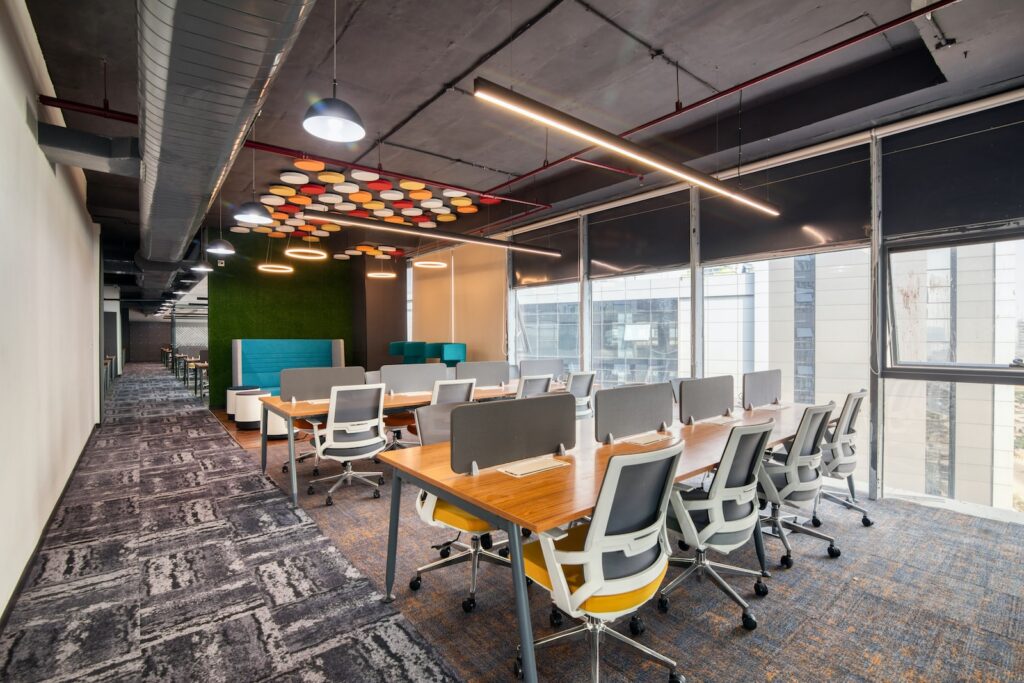
Best cafes and co-working spaces for working in Madrid
Of all the cities in Spain, Madrid is one of the best for co-working spaces… and you’ll find lots of great venues both in the center and on the outskirts. If you like office-style shared spaces, you’ll think this is one of the best places for remote workers in Europe.
The best co-working spaces for digital nomads in Madrid include:
- The Shed: one of the city’s friendliest and most immersive co-working spaces, The Shed is great for networking. Everyone is chatty (but still productive), and the whole space is light, airy, and clean.
- Nomad Coworking: this place has paid great attention to detail. Expect flowers, plants, A/C, central heating, a great kitchen, and a sociable breakout space. Slightly outside the central sprawl of Madrid, it’s a top option for people living in the northern part of the city.
- LOOM Huertas: right in the center of the city, LOOM Huertas is great for short-term digital nomads in Madrid. It has a beautiful view-packed terrace, a dog-friendly policy, and loads of nearby places for finding food, drinks, parties, and friends.
If you instead prefer working in cafes, your best options include…
- Tipos Infames: halfway between a bar, a cafe and a bookstore, this laid-back place is endearing, welcoming, and very laptop-friendly. It doesn’t have a huge amount of space… but get here early, and that’s not a problem.
- Pum Pum Café: if you like brunch spots, you’ll love this place. It offers some of the tastiest coffee and breakfast food in the city, and a small few work-friendly tables. The ambience is a nice combination between trendy and unpretentious.
- Café de la Luz: for digital nomads in Madrid who want to get all comfy and cozy, this place is pretty popular. With sofas, chic furniture, and lots of homely touches, visiting this cafe feels more like sitting in an old-school apartment.
… before we move on, it’s worth noting that (although there are some work-friendly cafes in Madrid) many of the city’s cafes don’t like people working in them. Because many of the city’s cafes are small, some limit internet access, and some have a no-working policy.
So if you plan to work in a Madrid cafe, it’s always best to check whether or not that’s actually an option.
Public transport in Madrid
Madrid’s public transport system is huge, extensive, easy to use, and easy to understand.
Best of all, it’s growing all the time—so the longer you stay, the better (and more far-reaching!) it’ll get. For digital nomads in Madrid, this is a huge plus of living in the city.
Made up of metros, buses, and light rail, you can use the system to reach every pocket of the city easily and quickly. You’ll find 12 metro lines, more than 300 metro stations, around 2,000 buses, and over 50 light rail stations.
For using the public transport system, you have many options. But if you’re gonna be around for a while, your best choice is the ‘abono.’ This card-based monthly pass allows you to travel endlessly around the city for just over €50 (or only €20 if you’re under 26).
For getting around the city in a slightly different (and sometimes healthier!) way, Madrid also offers e-Scooters, e-Bikes and motor scooters. These of course all have different price plans and tariffs… but you can use the e-Bikes all year for only €25 (or €15 if you have an Abono).
The cost of living in Madrid
When you join the digital nomads in Madrid, here are the types of costs you can expect:
- 1-bedroom apartment in the city center: €1,006
- 1-bedroom apartment outside of the city center: €798
- 3-bedroom apartment in the city center: €1,713
- One-way ticket on local public transport: €1.50
- Regular monthly pass for local public transport: €54.60
- Meal for 1 at an inexpensive restaurant: €12
- 3-course meal for 2 people at a mid-range restaurant: €50
- Large draught domestic beer in a bar or restaurant: €3.50
- Regular cappuccino in a cafe or restaurant: €2.12
- Regular liter of milk from a supermarket: €0.85
- Loaf of white bread from a supermarket: €1.02
- 12 regular eggs from a supermarket: €2.29
- 1kg of chicken breast filets from a supermarket: €7.01
We’ve taken all of the above numbers from ever-reliable Numbeo.
The expat community for digital nomads in Madrid
For digital nomads in Madrid, making friends is easy—the city is emerging as a remote-working hub, it has a very diverse population, it’s fervently friendly, and you’ll always find plenty of things to do.
As we’ve mentioned, around 1 in 6 of the city’s residents are non-natives—so there’s a massive pool of other foreigners to meet (while locals are also very friendly too!).
To get started with your friend-finding, Facebook is a great buddy-hunting option. On the platform, you’ll find expats, friendly foreigners, and many other digital nomads in Madrid. This group specializes in Madrid nightlife, this is for Madrid newcomers, this one offers cultural events, and this group is specifically for expats.
And that’s just the start—take a more detailed look through Facebook, and you’ll find plenty more groups for finding events, friends, places to hang out, and unusual (or usual!) things to do.
Couchsurfing also has a pretty busy community in the city.
Digital nomads in Madrid: final thoughts
Done! You’ve reached the end of our (hopefully) helpful guide for digital nomads in Madrid.
Again, if you’re looking for a comfortable and work-friendly place to live, we have plenty of serviced apartments and serviced flats on our site. They’re all cozy, homely and affordable—and you can move into them today with no fuss and no stress.
(And if you’re specifically looking for a studio, we have plenty of those too!)
For more information on remote working around the planet, check out our guides to being a digital nomad in Berlin, and being a digital nomad in London. And if you’re considering living in any other Spanish cities, we also have info-packed guides on Malaga, Seville, Valencia, and more.
Thanks for reading, thanks for visiting Homelike, and thanks for being you.


